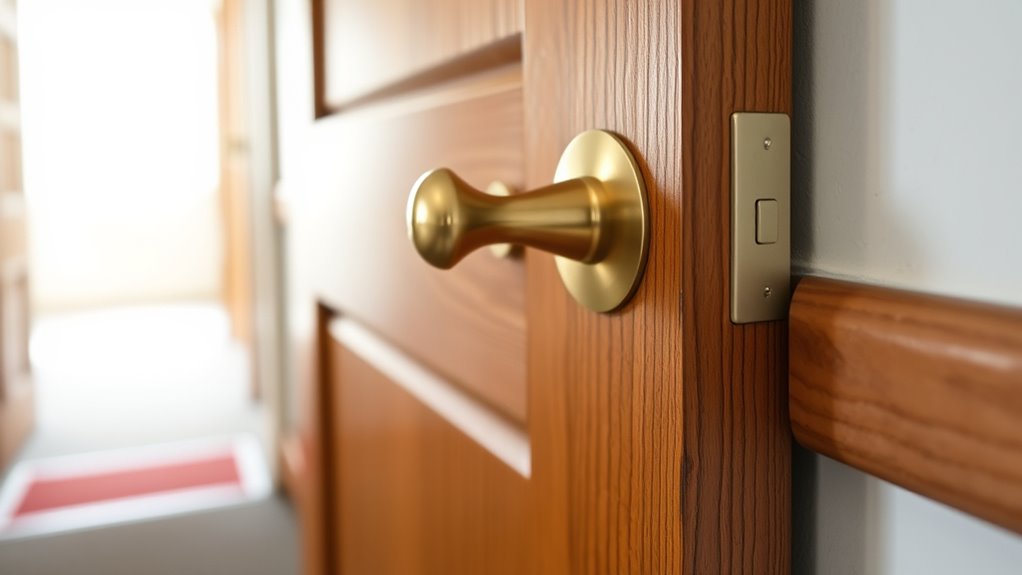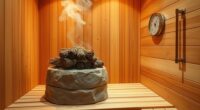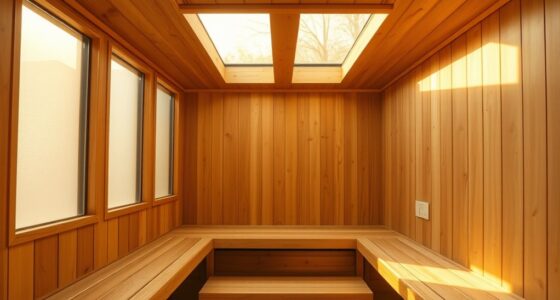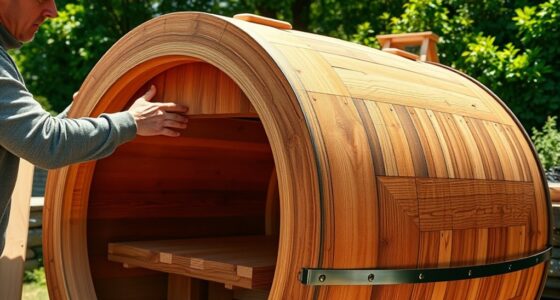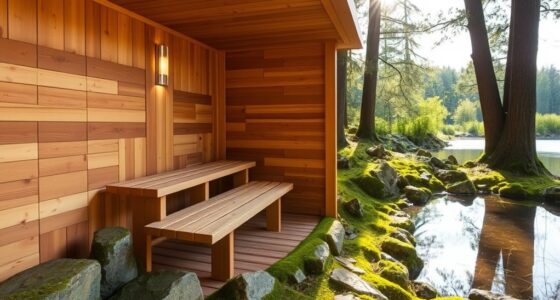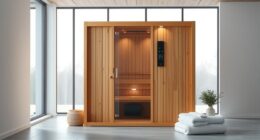Understanding how doors swing and their safety features is key to preventing accidents and ensuring quick escape during emergencies. Doors can open inward or outward, affecting safety and ease of use. Choosing the right swing direction, maintaining hinges, and installing safety devices all help prevent injuries and blockages. If you want to learn more about keeping doors safe and functioning well, keep exploring how proper installation and maintenance make a difference.
Key Takeaways
- The direction a door swings (inward or outward) affects safety, emergency access, and potential hazards.
- Proper hinge placement and mechanisms control swing speed, preventing injuries from sudden or fast door movements.
- Outward-swinging doors are recommended for emergency exits to keep pathways clear during evacuations.
- Regular maintenance of hinges, locks, and hardware ensures safe door operation and reduces accident risks.
- Using safety devices like door stops and educating users can prevent injuries caused by unexpected door swings.
How Doors Move: Swing Directions and Their Meanings
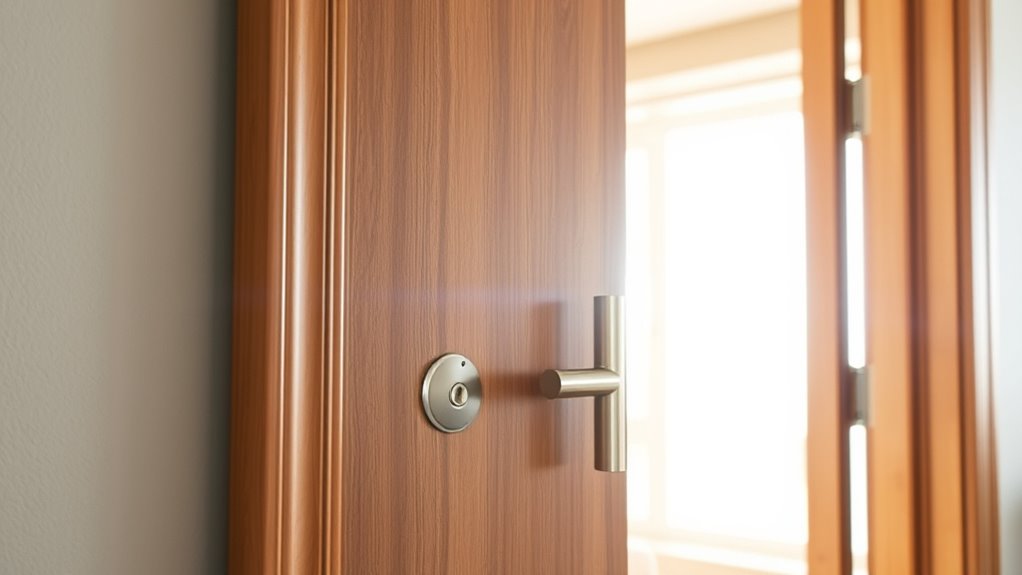
Understanding how doors move is vital for safety and proper usage. The hinge mechanisms determine whether a door swings inward or outward, affecting how you navigate spaces. Hinges are designed to support different swing directions, which can influence safety in emergency situations. For example, outward-swinging doors often require special hinges to guarantee smooth operation. Additionally, door closing speed plays a key role in safety; a door that closes too quickly can cause injuries, while one that closes too slowly may not secure properly. Proper hinge placement and mechanisms help control the swing direction and speed, ensuring the door functions safely and efficiently. Knowing these aspects helps you use doors correctly and prevents accidents caused by unexpected or uncontrolled movements. Understanding door hinge mechanisms is essential for maintaining safety standards.
Common Safety Hazards Related to Door Swings
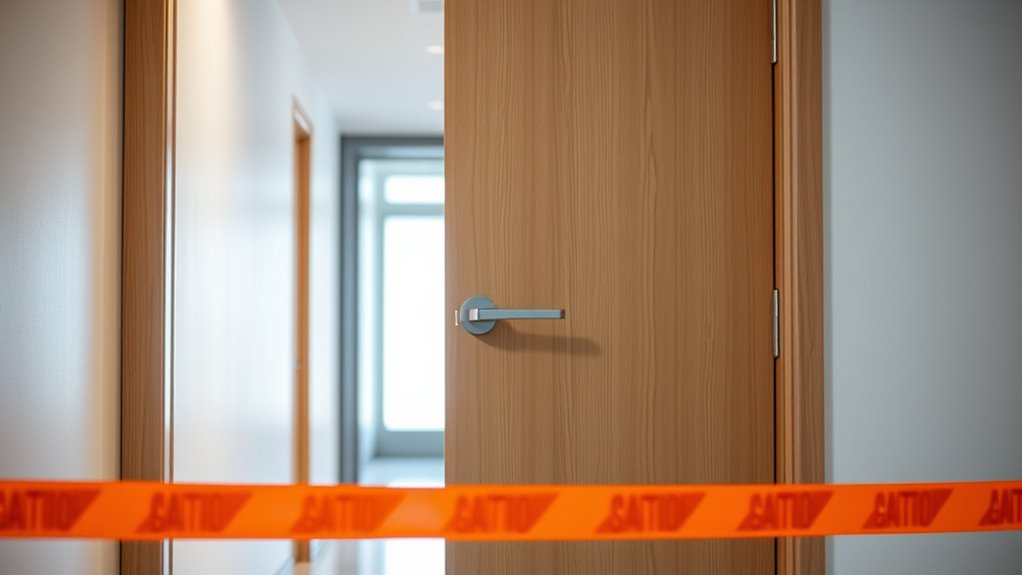
Door swings can pose significant safety hazards if not properly managed, especially in high-traffic or emergency situations. A door that swings inward unexpectedly can cause injuries or block emergency exit routes, delaying vital evacuations. Faulty or improperly installed door lock mechanisms can prevent doors from opening quickly when needed, risking trapped occupants. Additionally, doors that swing toward people increase the risk of being struck or bumped, especially in busy areas. In emergencies, these hazards become even more critical, as quick access to exits is essential. Ensuring that doors swing in the correct direction, that lock mechanisms are reliable, and that emergency exit routes remain clear helps minimize these safety risks and keeps everyone protected. Properly installing and maintaining door hardware is essential to prevent malfunctions and ensure safety.
Choosing the Right Door Swing for Safety and Functionality
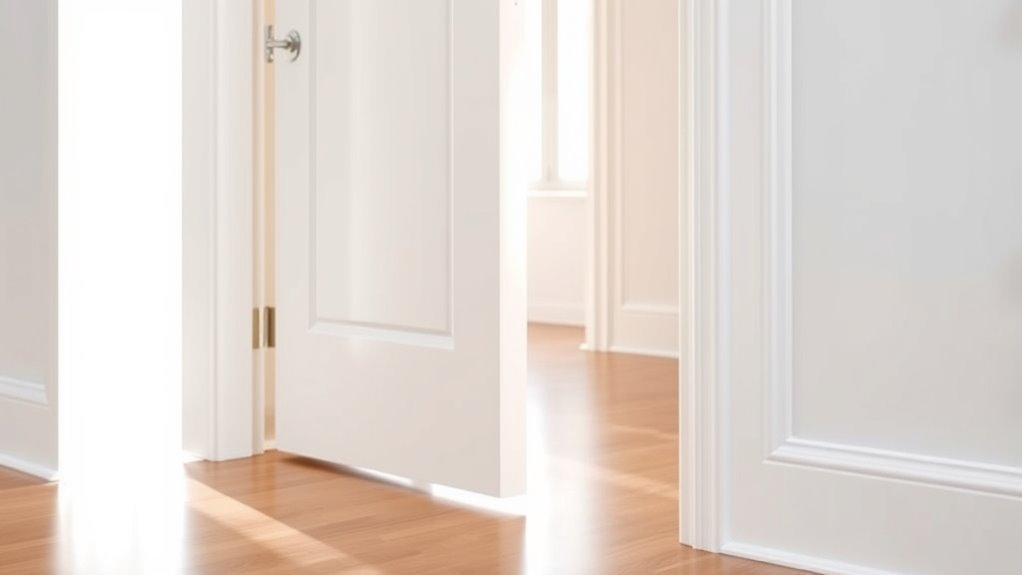
Choosing the right door swing is key to maximizing safety and functionality in any space. You should consider the door material, as sturdier options like metal or solid wood provide better security, especially in high-traffic or security-sensitive areas. The type of locking mechanisms also plays a vital role; electronic locks, deadbolts, or keypad entries can enhance safety and control access. Make certain the door swing direction suits the room’s layout to prevent accidents and facilitate smooth movement. For example, in emergency exits, outward swings prevent blocking pathways. Pay attention to how the door’s material and locking mechanisms work together to meet your safety needs. Proper selection helps you avoid hazards and guarantees the door functions effectively in daily use. Additionally, understanding door swing and safety considerations can help you make informed decisions that enhance both security and usability.
Tips for Properly Installing and Maintaining Safe Door Swings
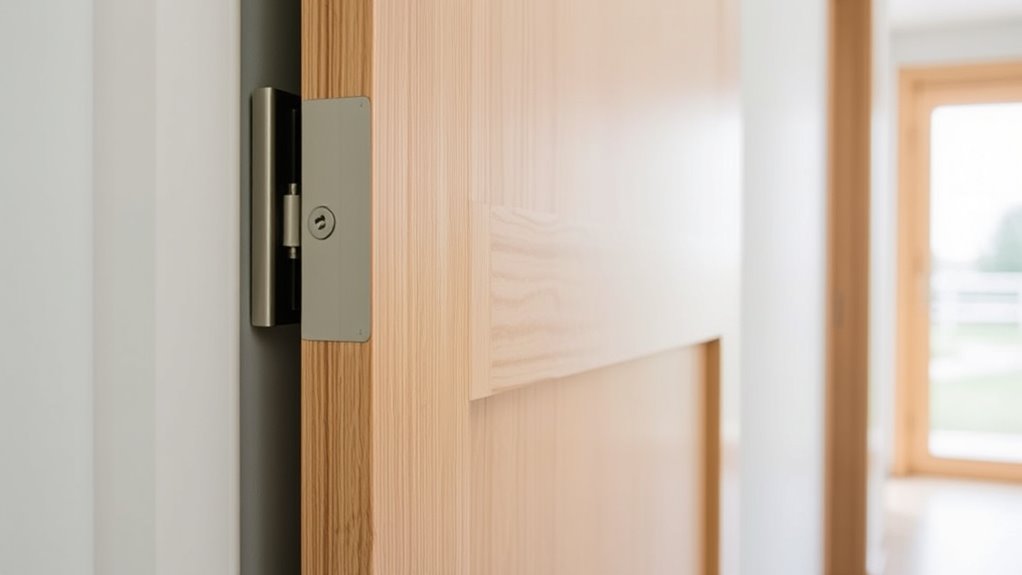
Proper installation and maintenance are essential to guarantee your door swing remains safe and functional over time. Start by ensuring hinges are secure and well-lubricated to prevent sticking or squeaking. Regular hinge maintenance avoids misalignment that could cause the door to swing improperly. Check the door latch to ensure it engages smoothly without forcing. When installing, verify the door is level and swings freely without hitting walls or furniture. Use the following table to visualize key components:
| Component | Tip | Importance |
|---|---|---|
| Hinges | Lubricate regularly | Prevents squeaking and misalignment |
| Door latch | Test for smooth engagement | Ensures security and safety |
| Frame alignment | Adjust if door sticks or swings unevenly | Maintains proper swing |
| Hardware screws | Tighten loose screws | Stabilizes hinges and latch |
| Seal and weatherstripping | Check for gaps or wear | Maintains insulation and safety |
Additionally, regularly inspecting appliances like refrigerators and washers as part of your appliance maintenance plans can help prevent unexpected issues that might compromise safety around your home.
Consistent care keeps your door swinging safely.
Simple Steps to Prevent Door-Related Accidents
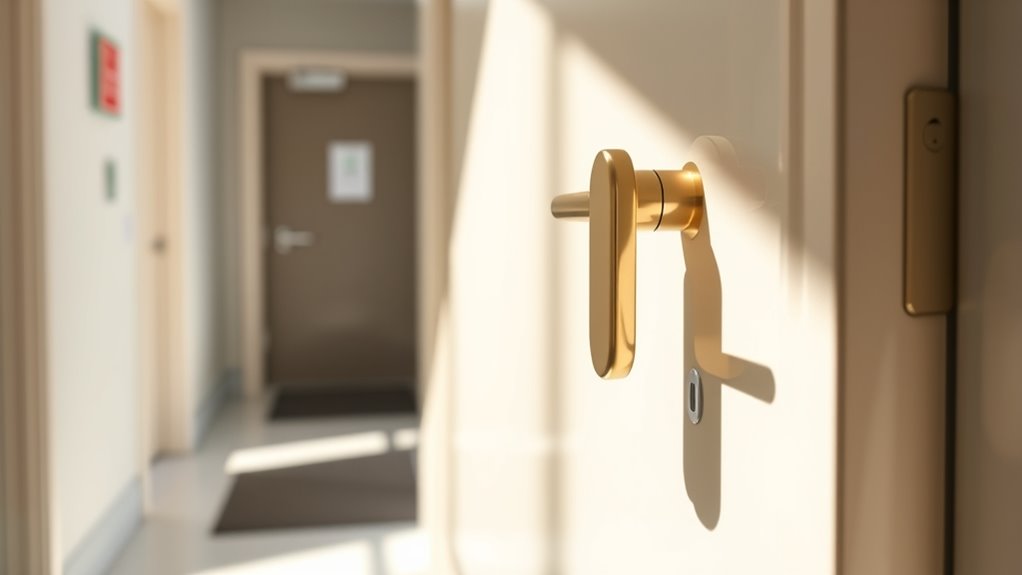
Regularly inspecting and maintaining door hardware can considerably reduce the risk of accidents. Check door lock mechanisms to ensure they function smoothly and securely, preventing unexpected closures or jams. Make sure door hinge types are properly lubricated and securely attached, as loose or worn hinges can cause sudden door movements. Install door stops or bumper pads to prevent doors from swinging too forcefully or hitting walls. Use safety devices like hold-open clips for heavy doors, reducing sudden swings. Educate everyone about safe practices, such as avoiding standing in doorways during operation. Regular maintenance and awareness of door hardware, including lock mechanisms and hinge types, help create a safer environment. Additionally, understanding the importance of proper maintenance of door hardware can significantly enhance safety and prevent accidents. Taking these simple steps minimizes the chances of injuries caused by door swings.
Frequently Asked Questions
How Do I Determine the Best Door Swing for a Small Space?
To select the best door swing for a small space, consider door clearance and hinge placement. Opt for a door that swings outward to save interior space, or choose a sliding door if space is very tight. Confirm hinge placement allows smooth operation without obstructing other fixtures. Measure carefully to maximize clearance and avoid obstacles, making sure the door swing doesn’t interfere with furniture or pathways.
Are Automatic Doors Safer Than Manual Swinging Doors?
Automatic doors are generally safer than manual swinging doors, especially with sensor technology that detects movement and prevents injuries. Studies show that sensor-activated doors reduce accidents by 30%, as they automatically open and close, eliminating the need to push or pull. They’re especially vital near emergency exits, ensuring quick, hands-free access during emergencies. So, if safety is your priority, automatic doors with sensors offer significant advantages.
What Materials Are Safest for High-Traffic Door Installations?
For high-traffic door installations, you should prioritize materials like stainless steel or aluminum because they’re durable and easy to maintain. Use door hardware that’s sturdy and corrosion-resistant to guarantee safety and longevity. If you need fire safety, opt for fire-rated doors made from materials like steel or specialized composites. These materials help prevent accidents, withstand heat, and meet safety codes, keeping everyone safe during busy times.
Can Door Swings Be Modified After Installation for Better Safety?
Yes, you can modify door swings after installation for better safety. You should consider door hinge adjustments to change the swing direction, which can prevent accidents or improve accessibility. Typically, this involves removing the door, repositioning or replacing the hinges, and then re-hanging it to swing in the desired direction. Always guarantee you follow proper procedures or consult a professional to ensure the modification is secure and safe.
How Do Weather Conditions Affect Door Swing Safety and Maintenance?
Weather impacts your door swing safety by causing materials to expand, contract, or warp, which can lead to misalignment or sticking. To maintain safety, regularly inspect your door for signs of wear or damage, especially after extreme weather changes. Keep hinges lubricated, seal gaps, and check for rust or corrosion. These maintenance tips help make certain your door functions smoothly, reducing the risk of accidents caused by weather-related issues.
Conclusion
Understanding door swings and their safety features can prevent accidents and keep everyone safe. By choosing the right swing, installing properly, and staying aware of hazards, you create a safer environment. Trust that simple steps and informed decisions make a big difference—it’s a proven fact that well-maintained doors reduce injuries. So, take these tips seriously and enjoy peace of mind knowing you’re doing your part to keep your space secure.
